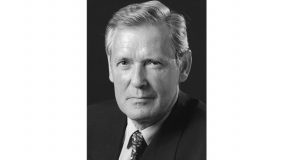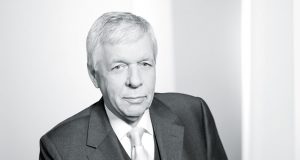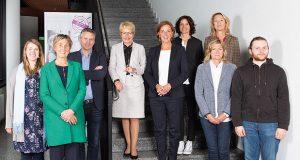With the phase-out of nuclear power production in 2022 and the planned end of coal-fired power generation in 2038, one thing is certain: Wind and solar energy will be the main pillars of electricity supply in Germany in the future. However, both renewable energy sources are subject to weather-related fluctuations. As an energy medium, hydrogen can balance out these fluctuations and thus become an important building block for a successful energy transition. For this reason, Essen/Germany-based STEAG GmbH’s power station site in Völklingen-Fenne, Saarland/Germany, is to be expanded to include the “Fenne HydroHub”, where hydrogen is to be produced on an industrial scale.
STEAG GmbH, Siemens AG, the Institute for Future Energy and Material Flow Systems (IZES gGmbH), and the German Research Centre for Artificial Intelligence (DFKI GmbH) are entering the “Fenne HydroHub” project outline in the “Living Labs for the Energy Transition” ideas competition staged by the German Federal Ministry for Economic Affairs and Energy (BMWi). Through this competition, the German government is aiming to accelerate the expansion of hydrogen technologies and the establishment of integrated energy solutions, and make them ready for the market.
Electricity-based hydrogen production (electrolysis) based on renewable energy sources will play a key role. Electricity from wind and solar power is used to split water into oxygen and so-called “green hydrogen” by electrolysis. The hydrogen can then be used as a substitute for fossil fuels, making energy production CO2-free. For energy-intensive industries such as steel and chemicals, the use of hydrogen can be a decisive step towards better environmental compatibility and climate neutrality.
With the “Fenne HydroHub”, the four partners in the project want to create a prototype that can also be constructed at other locations across Germany. In addition to reducing CO2 emissions, this will also create new jobs. A decision as to whether the partners can submit a firm application for funding in the second phase of the competition is expected at the end of June 2019. The project partners estimate an investment volume in the mid two-digit million range.
The Fenne energy hub provides optimum conditions for gathering experience in the operation and commercial use of the electrolysis process in an industrial laboratory. Not only does the site have the necessary electricity, gas, heat and storage infrastructure, it is also home to qualified employees who are already actively shaping the energy transition with their expertise. In addition, there is the geographical proximity to the Saarland steel industry as a possible customer for hydrogen. Furthermore, a link is to be established with the transport sector for hydrogen-powered vehicles.
The four partners are breaking new ground in Fenne, where the interaction of various components and systems is being tested on an industrial scale for the first time. A new electrolyser, a large hydrogen storage tank and a new high-temperature heat pump come together with an existing large-scale battery system, a mine gas engine cogeneration plant and an electrode boiler at the energy hub. This means that all the necessary connections to electricity, heat and gas networks are available and usable. In addition, STEAG is considering the construction of a combined cycle power plant at the Fenne site, in which hydrogen can be converted back to electricity on a large scale in a gas turbine. (STEAG/Si.)


